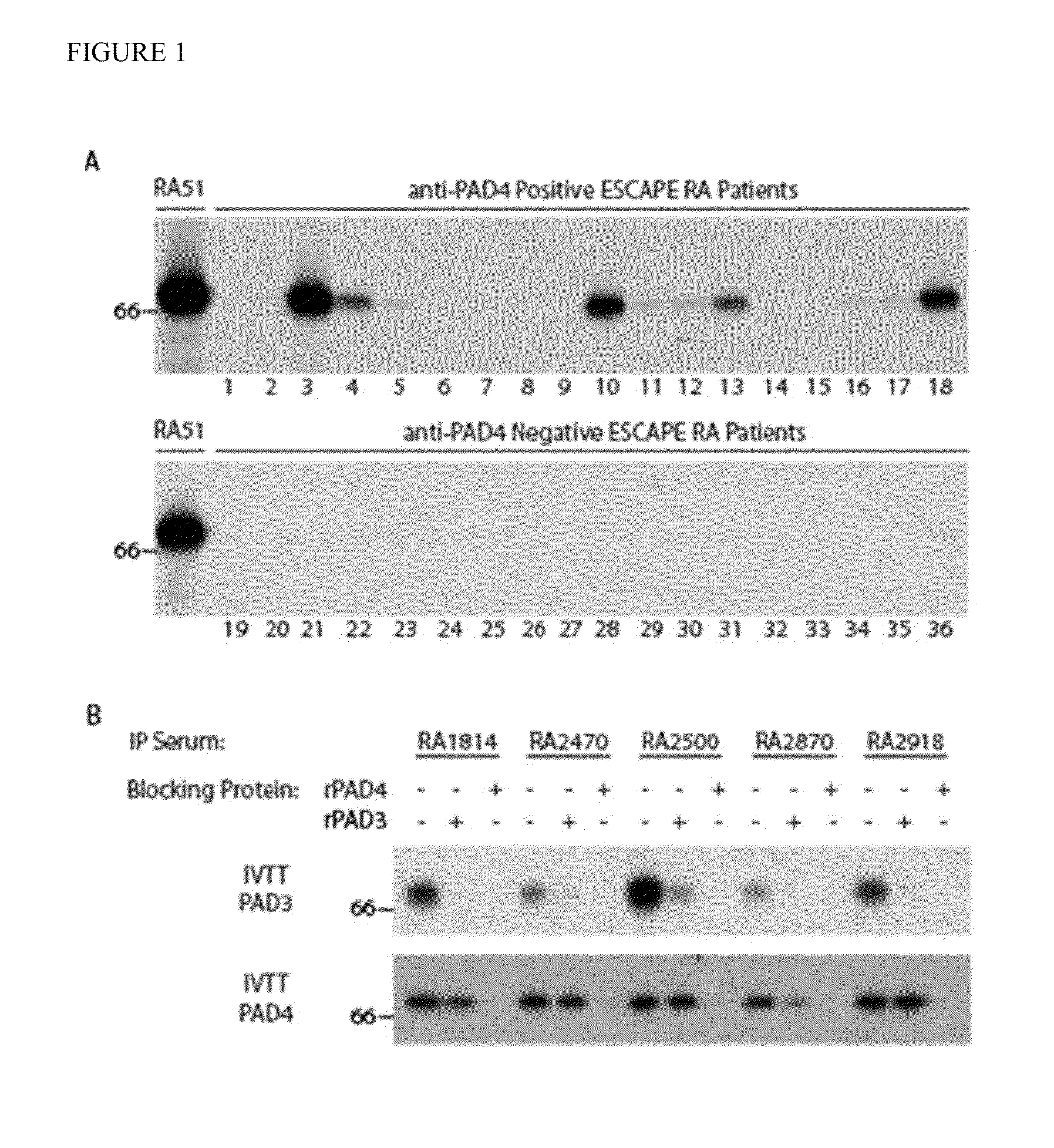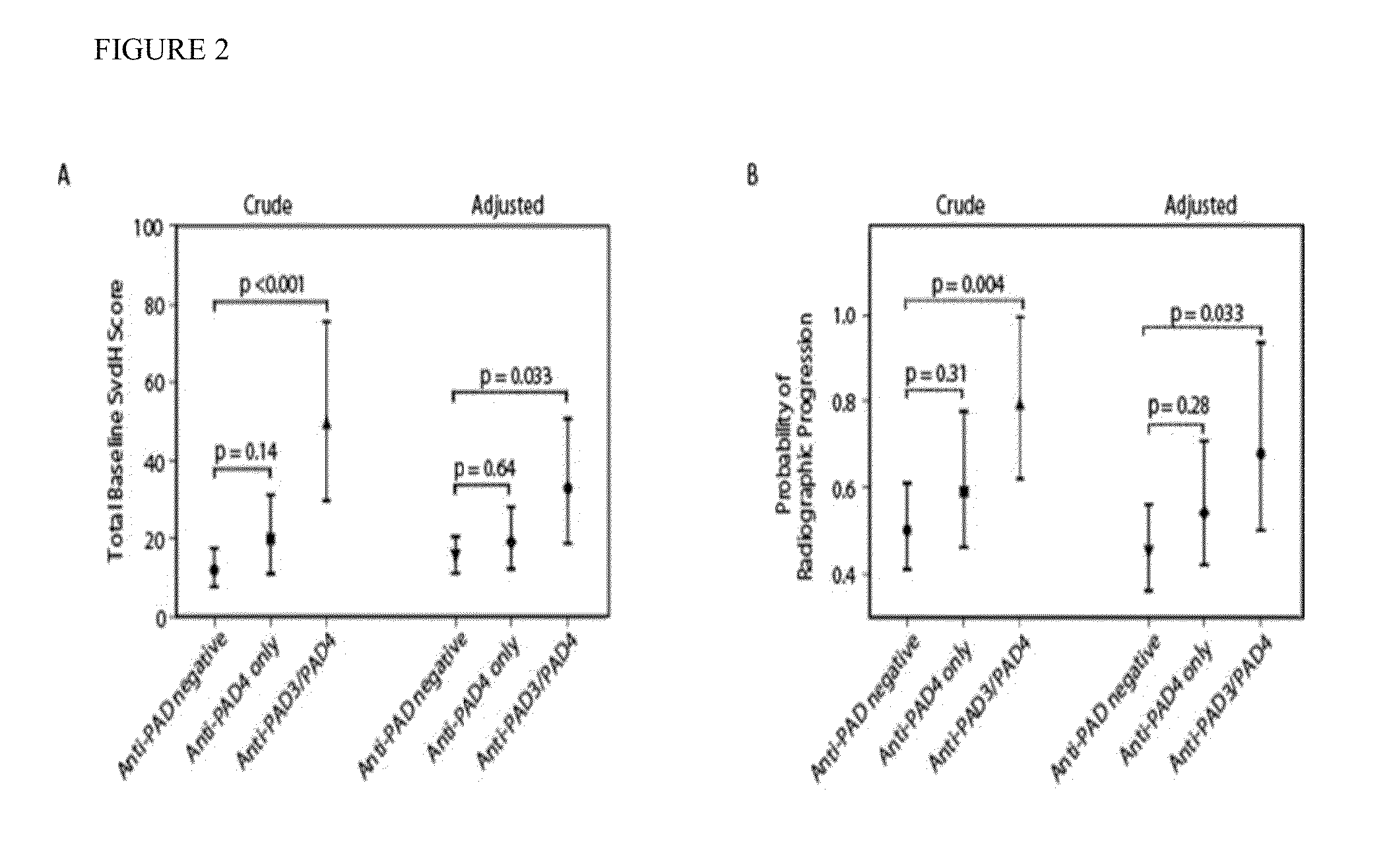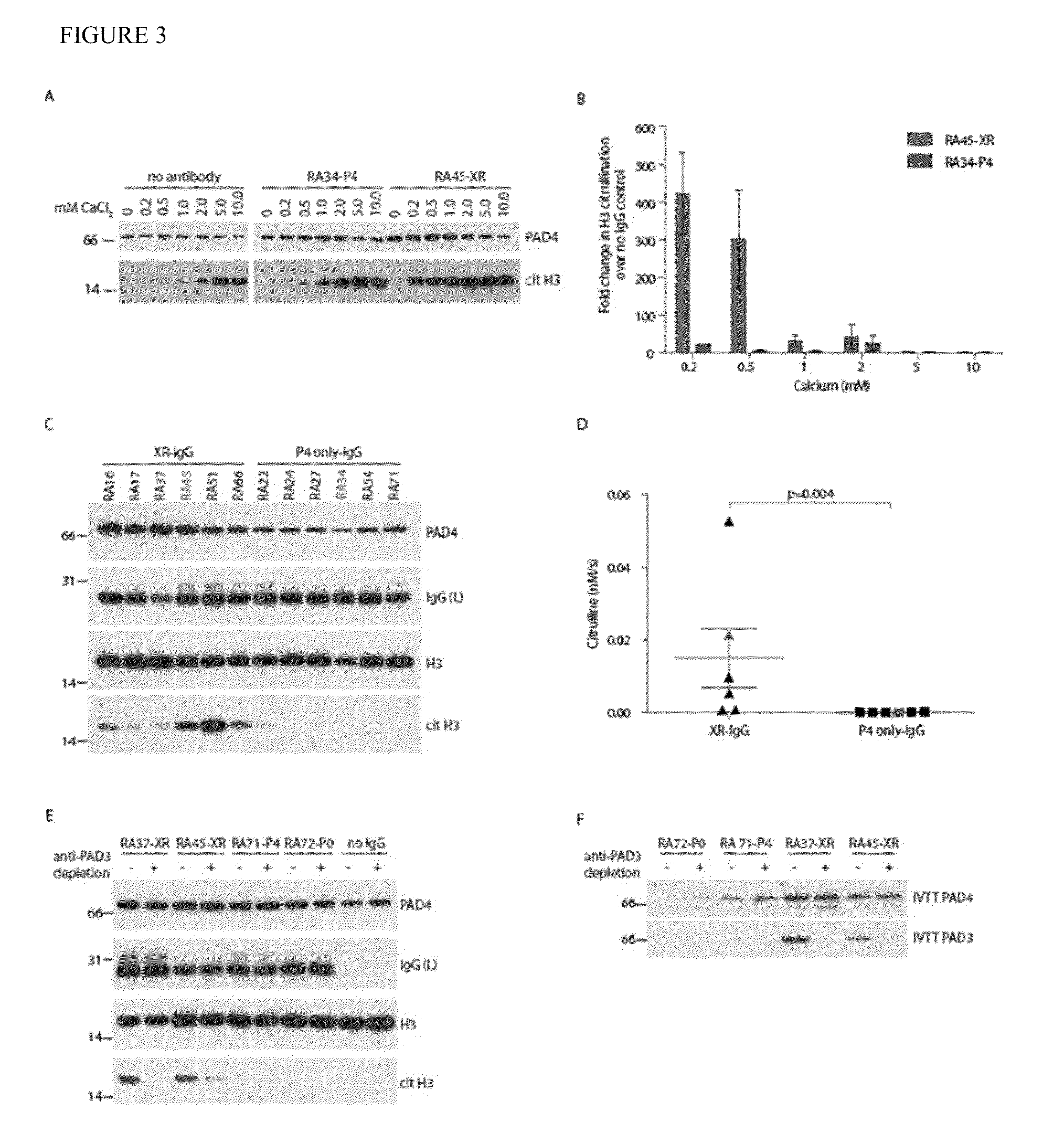Human autoantibodies specific for pad3 which are cross-reactive with pad4 and their use in the diagnosis and treatment of rheumatoid arthritis and related diseases
a technology of human autoantibodies and anti-rheumatoid arthritis, which is applied in the field of human autoantibodies, can solve the problems of not being able to detect such high calcium concentrations during pad4 activation in vivo, and achieve the effects of enhancing enzymatic activity, reducing the requirement for calcium, and enhancing pad4 activity
- Summary
- Abstract
- Description
- Claims
- Application Information
AI Technical Summary
Benefits of technology
Problems solved by technology
Method used
Image
Examples
example 1
[0098]In order to screen for anti-PAD3 antibodies, sera from a convenience sample of RA patients were initially used to immunoprecipitate 35S-methionine labeled in vitro transcribed and translated (IVTT) PAD3 protein. PAD3 autoantibodies were detected in 18% (8 / 44) of sera. Anti-PAD3 was exclusively present in patients with PAD4 antibodies and were observed in 40% of anti-PAD4 positive sera (FIG. 5A). In order to determine the prevalence of anti-PAD3 in a large, well-defined group of established RA patients, PAD3 immunoprecipitation was performed on 194 sera from the ESCAPE RA cohort (a prospective observational cohort study of subclinical cardiovascular disease in RA, for which extensive clinical and serologic data was available). Again, anti-PAD3 was only detected in the serum of patients with anti-PAD4 antibodies (FIG. 1A, representative positives shown in lanes 3, 4, 10, 13 and 18). The overall prevalence of anti-PAD3 antibodies was 12% and these antibodies were present in 32% o...
example 2
[0099]The uniform association of anti-PAD3 with anti-PAD4 suggested that they are either cross-reactive or distinct antibodies that are always generated together. In order to determine if the two antibodies were recognizing the same or distinct antigens, competition experiments were performed. Recognition of radiolabeled IVTT PAD3 was almost completely abrogated by pre-incubation of eight anti-PAD3 positive sera with unlabeled recombinant PAD4 (rPAD4), demonstrating that these are cross-reactive (FIG. 1B, representative data shown in upper panel). Interestingly, only a subset of the PAD4 antibody pool in a given patient's serum cross-reacted with PAD3. Thus, pre-incubation of eight cross-reactive sera with unlabeled rPAD3 reduced the immunoprecipitation of IVTT PAD4 by an average of 43% with a range of 2.2-83%, depending on the individual serum tested (FIG. 1B, representative data shown in lower panel). Pre-incubation with rPAD3 did not affect the immunoprecipitation of IVTT PAD4 by...
example 3
[0100]Cross-reactive antibodies are associated with severe erosive joint disease. Several previous studies have demonstrated that anti-PAD4 antibodies are associated with increased disease severity in RA. Due to the cross-reactivity of anti-PAD3 with PAD4, we sought to determine if this association is maintained in RA patients with anti-PAD3 antibodies and if novel associations existed. Patients from the ESCAPE RA cohort were divided into three groups based on PAD antibody status (Group 1: anti-PAD negative, Group 2: anti-PAD4 only, and Group 3: anti-PAD3 / PAD4). The total Sharp van der Heidje score (SvdH) [a cumulative measure of disease severity that scores the degree of radiographic joint space narrowing and bone erosion in multiple joints of the hands, wrists, and feet] was available for all 194 patients at the baseline visit. For 150 individuals, this score was also available at follow-up, an average of 39±4 months later. Patients with anti-PAD3 antibodies had a more than 2.5-fo...
PUM
 Login to View More
Login to View More Abstract
Description
Claims
Application Information
 Login to View More
Login to View More - R&D
- Intellectual Property
- Life Sciences
- Materials
- Tech Scout
- Unparalleled Data Quality
- Higher Quality Content
- 60% Fewer Hallucinations
Browse by: Latest US Patents, China's latest patents, Technical Efficacy Thesaurus, Application Domain, Technology Topic, Popular Technical Reports.
© 2025 PatSnap. All rights reserved.Legal|Privacy policy|Modern Slavery Act Transparency Statement|Sitemap|About US| Contact US: help@patsnap.com



